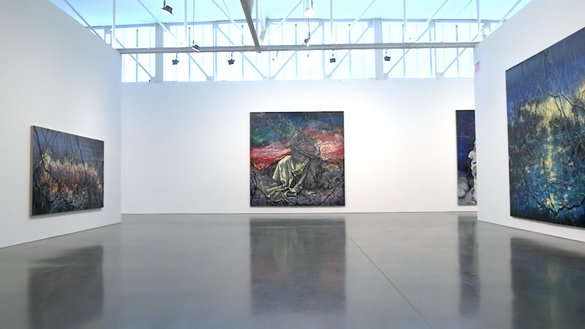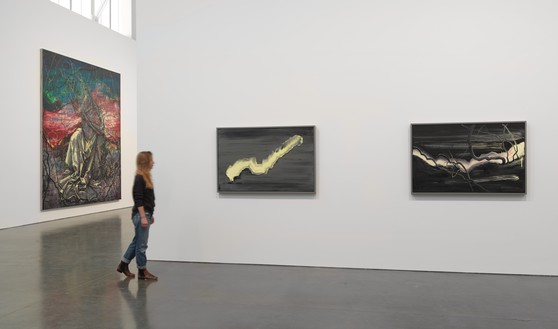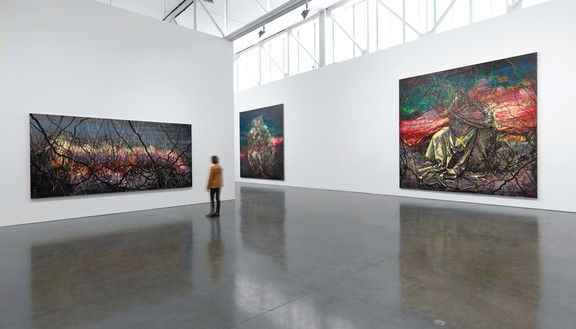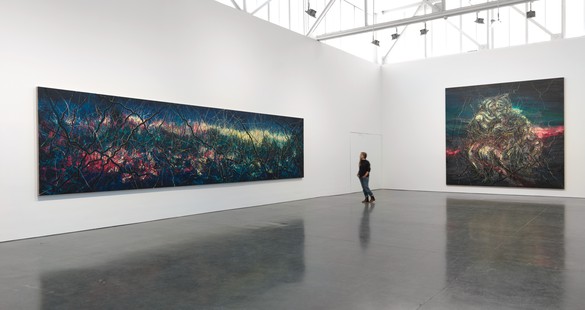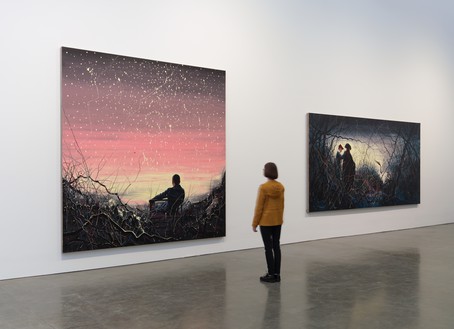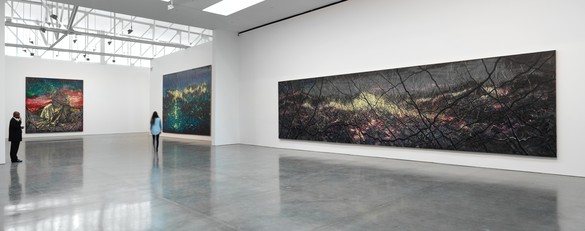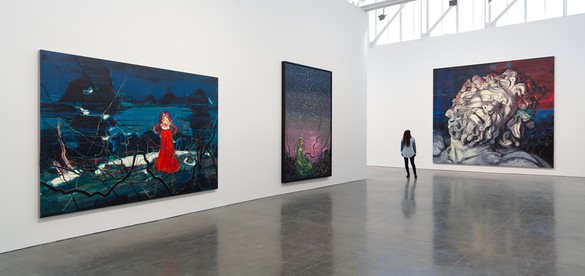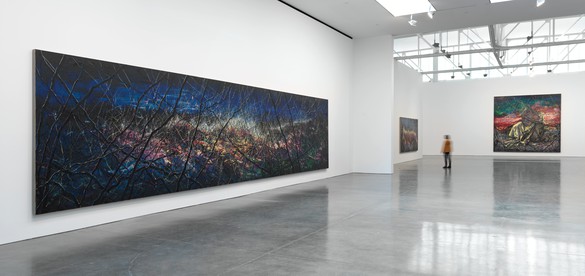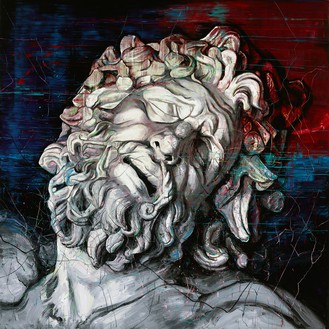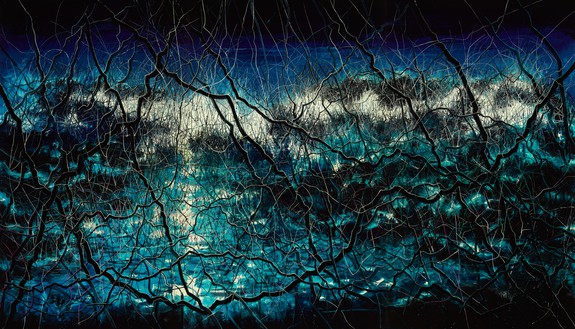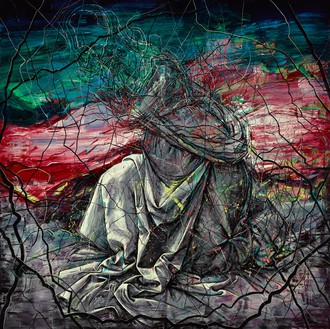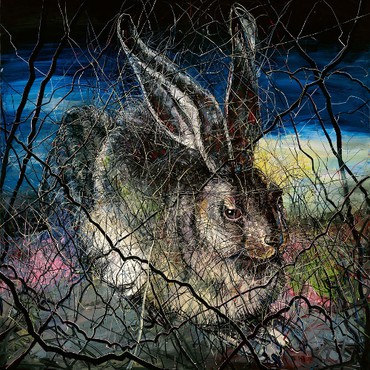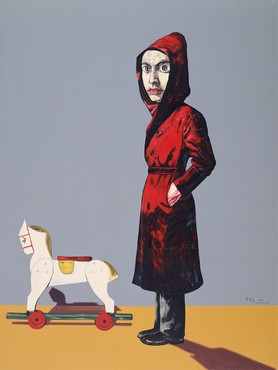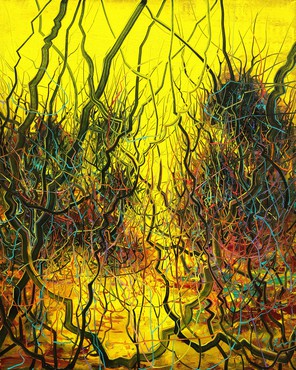About
Gagosian New York is pleased to present paintings, sculpture, and works on paper by Zeng Fanzhi. This is his first exhibition with the gallery in New York, following major exhibitions at Gagosian Hong Kong (2011) and Gagosian London (2012).
Zeng is at the forefront of a generation of Chinese artists who have achieved national and international prominence in the wake of the Cultural Revolution of the 1970s. Over the past three decades he has probed the place of the unconscious in the construction of human experience while reflecting on the collective national psyche in the face of broad and accelerated change. In his formative years, he was particularly inspired by the works of German Expressionism and French Romanticism, in which he found precedents for exploring the psychology of selfhood in the throes of societal flux. His searing Hospital Triptych No. 1 (1991), an early example of his virtuosic application of historical styles and techniques to interpret contemporary national realities, was shown in the pivotal exhibition China’s New Art, Post-1989 at the Hong Kong Arts Center in 1993.
With time, Zeng has tempered the direct impact of Western Expressionism with the local influence of traditional guohua painting methods. His eloquent and confrontational work is charged with melancholy, unfolding in a succession of dystopic themes, both introspective and overtly socially critical. After the nightmarish Hospital paintings came the visceral Meat paintings, which juxtapose figures with butchered flesh; then the enigmatic Mask paintings, treating social alienation; and the densely skeined landscapes with their obscured figures, alluding to the Taoist perception of human transience within nature’s boundless permanence. With the painting From 1830 till now No. 4 (2014), exhibited at the Musée du Louvre last year, Zeng depicts Eugene Delacroix’s Liberty Leading the People (1830) as a neglected stone monument in an overgrown thicket.
Recent paintings include large-scale nocturnal landscapes, some populated by anonymous figures or identifiable historical subjects, and smaller, more abstract canvases in which schematic black branches stand out in sharp relief against backgrounds of sweeping horizontal brushstrokes. In the landscape paintings, traditional techniques blend seamlessly with modern abstraction: in an idiosyncratic method originally adopted out of necessity due to injury, Zeng sometimes works with multiple brushes in each hand, undermining his own precision through a process that has become a continuous cycle of creation and destruction. The “abstract landscape” paintings evolve as if autonomously through the rhythmic processual vitality with which Zeng approaches his persistent motifs. Invoking a lineage beginning with Song Dynasty depictions of idyllic, imaginary vistas rendered in calligraphic strokes, he envisions vast scenes of bleak terrains spontaneously lit with bright pinks and blues, and eclipsed by jagged black branches, graphic in their concise and sinister silhouettes.
Share
Artist
Downloads
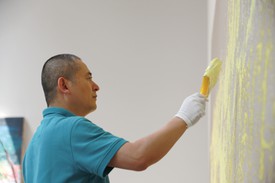
Zeng Fanzhi’s Blue
A slideshow containing photographs of the creation of Blue (2015) by Zeng Fanzhi.

Artist to Artist: Georg Baselitz and Zeng Fanzhi
On the occasion of Georg Baselitz: Years later at Gagosian, Hong Kong, Zeng Fanzhi composed a written foreword for the exhibition’s catalogue and a video message to the German painter. Baselitz wrote a letter of thanks to the Chinese artist for his insightful thoughts.
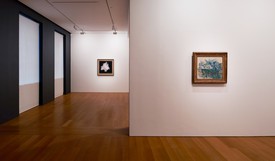
Zeng Fanzhi on Cézanne, Morandi, and Sanyu
Zeng Fanzhi speaks about curating the exhibition Cézanne, Morandi, and Sanyu at Gagosian, Hong Kong, and the connections between the three artists’ works. Interview by Jin Jing.
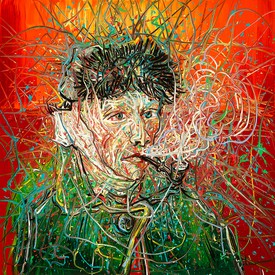
Zeng Fanzhi | Van Gogh
Zeng Fanzhi discusses his approach to the Zeng Fanzhi | Van Gogh exhibition in Amsterdam and the various ways the renowned Dutch painter continues to inspire artists today.
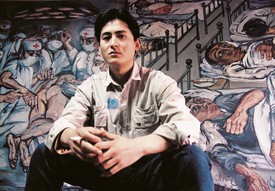
Zeng Fanzhi: The Early Years
Gladys Chung investigates the formative stages of this artist’s career.
